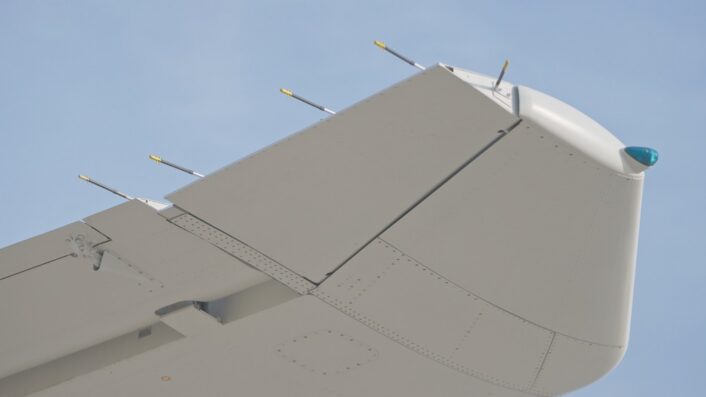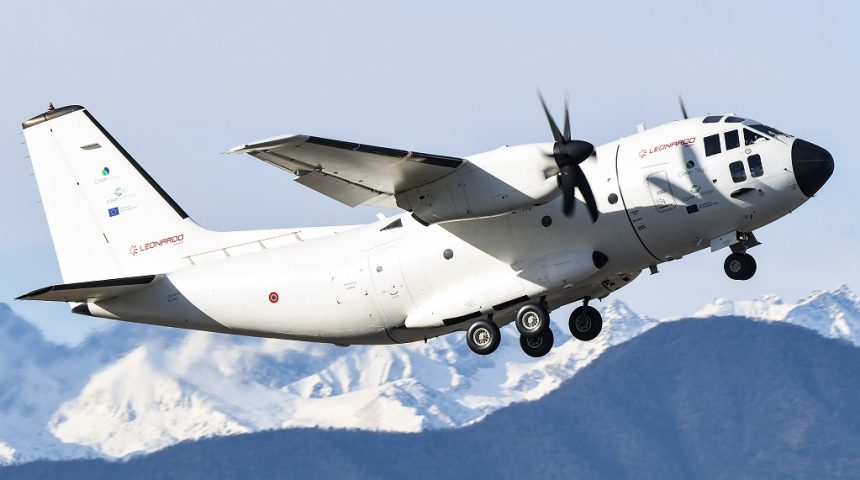The test experimented innovative wingtips and morphing winglets capable of changing shape during flight.
Leonardo concluded at Torino-Caselle airport the Regional Integrated Aircraft Demonstration Platform campaign with its C-27J Flying Test Bed, a technological demonstration aircraft in the European Clean Sky 2 programme. The press statement says this in-flight demonstration concluded a technological development cycle that began 10 years ago in Europe under Leonardo’s coordination towards a sustainable and climate neutral aviation.
The programme involved national aeronautical excellences integrated with a highly qualified European ecosystem of over 100 partners, inclusive of SMEs, Research Centres, Universities and Industries. Leonardo designed innovative technical solutions and made available its C-27J Spartan aircraft, renowned for its outstanding flight performance and multi-mission capabilities, as a European Flying Test Bed.
Among the technologies being validated to significantly contribute to reducing the fuel consumption are innovative wing configurations featuring special mobile surfaces – Innovative Wingtips and Morphing Winglets – capable of changing shape during flight through active, adaptive technology and digital systems. These technologies have been considered for years among the most likely candidates to improve the efficiency of future aircraft throughout all phases of flight.
“We are registering extraordinary technological results, made possible by an excellent European aeronautical ecosystem in which Leonardo is at the helm, brilliantly playing the part of innovation and sustainability coordinator,” notes Aurelio Calcedonio Boscarino, in charge of Strategy and Innovation at Leonardo’s Aircraft Division.
According to the press release, these unusual surfaces are manoeuvred by advanced electromechanical actuators with digital local control units and a central flight control computer on board of the aircraft which acts as a supervisor, checking and regulating the performance of the active Load Control & Alleviation system in real time to optimise the aircraft asset, performance and fuel consumption during the flight.
Leonardo also provided some more technical details about the systems being tested. The WingTip is equipped with a mobile part measuring about 80 centimetres, capable of rotating by up to ±15 degrees, while the Winglet is a vertical flap about 1 metre high at the tip of the wing, composed of two independent mobile parts, each with a maximum rotation of +5 to -15 degrees.

The company further mentioned that this milestone comes only a few days after the new fuselage Pax Cabin Demonstrator completion, another important technological achievement under the European Clean Sky 2 programme. In fact, on Jan.10, having passed vibration and acoustic testing, this full-scale demonstrator of a regional aircraft fuselage was taken from Leonardo’s Large Structures Laboratory in Pomigliano d’Arco to the Fraunhofer Institute in Valley, Germany, where it will conduct comfort tests and validate the technologies integrated at the highest levels of maturity that can be achieved in research.
The Pax Cabin Demonstrator is the result of Leonardo’s collaboration with twenty European partners, including universities, research centres, SMEs and industries. Measuring 7.3 metres in length and having a diameter of 3.4 metres, the structural components are made in composite materials assembled by using advanced automated systems. The goal is to improve onboard comfort with innovative environmental conditioning solutions and cabin components, such as onboard services and special seats, says the press release.









